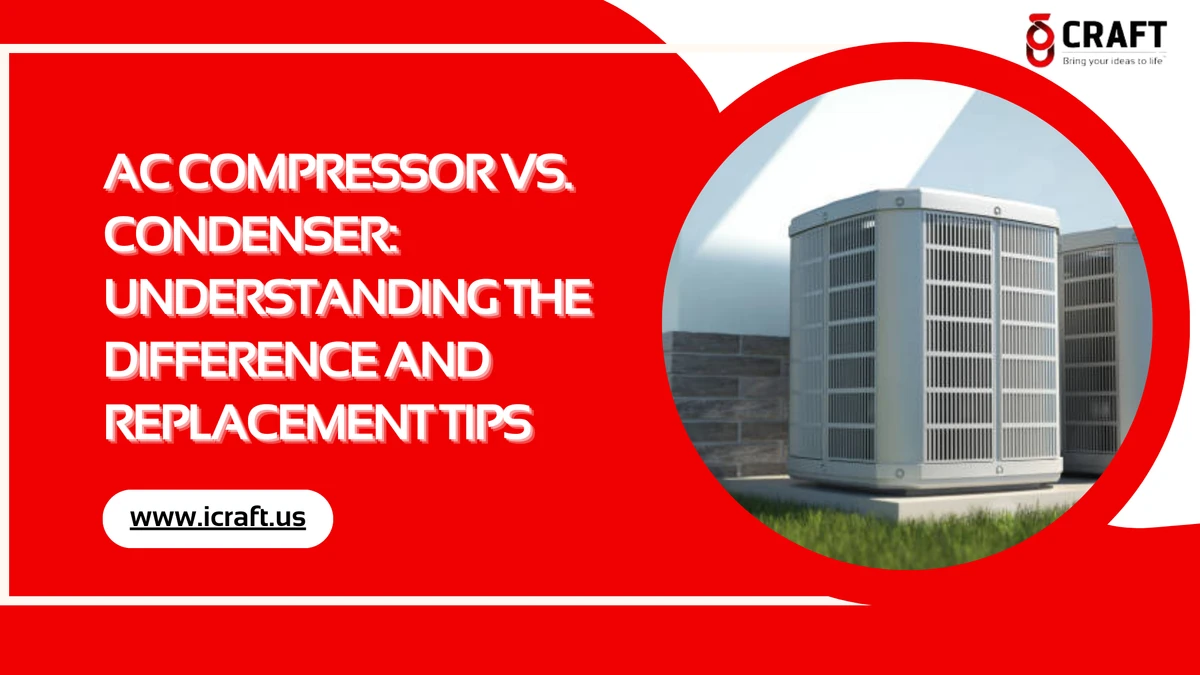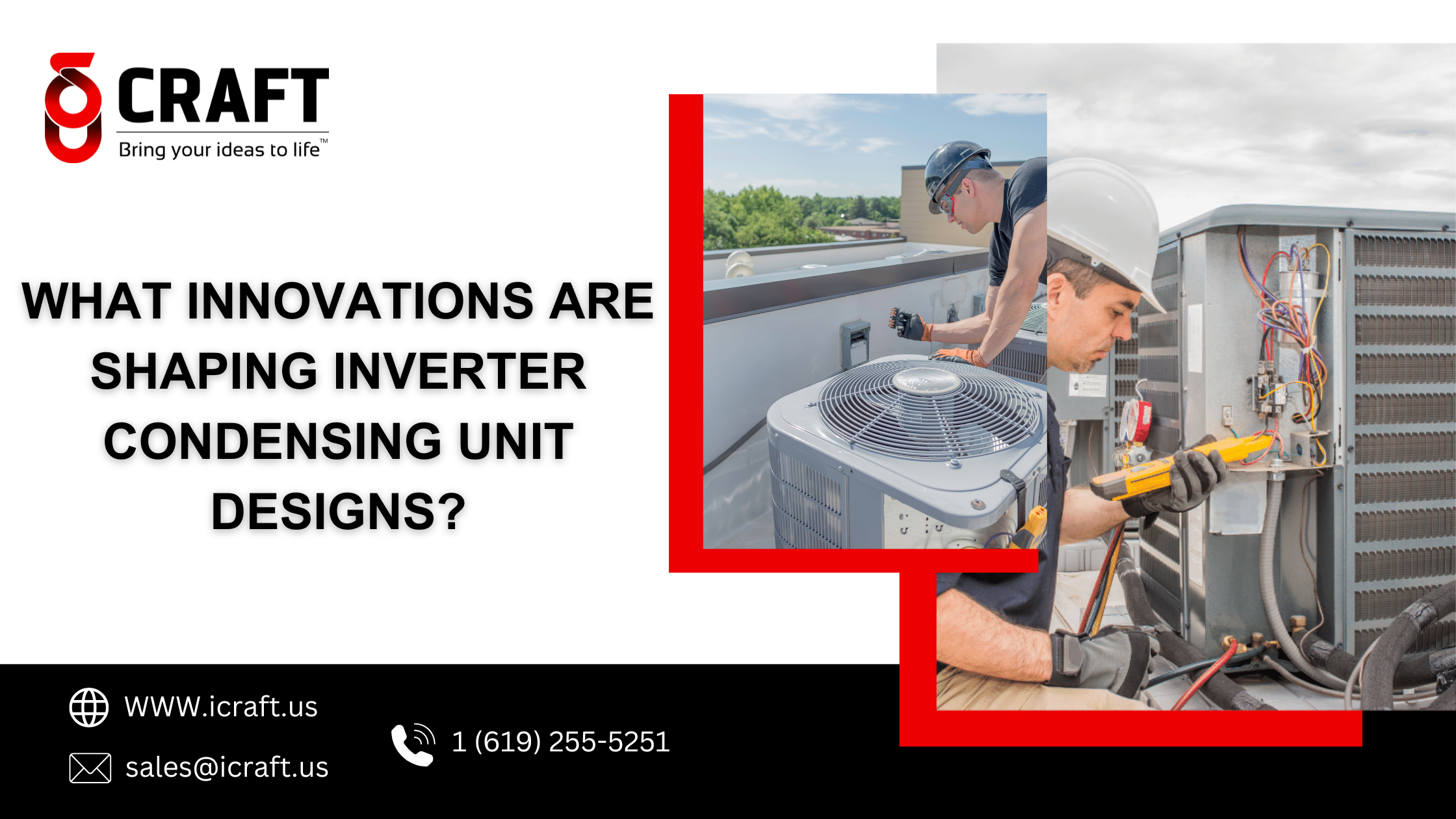 White Hat Link Building – Safe. Powerful. Long-Term.
White Hat Link Building – Safe. Powerful. Long-Term.
AC Compressor vs. Condenser: Understanding the Difference and Replacement Tips
Written by Thermocraft (Craft Group) » Updated on: June 17th, 2025


The air conditioning system in your home or vehicle consists of several components that work together to ensure efficient cooling. Among these, the AC compressor and the condenser are vital. Although they are interconnected, their functions are distinct. Here’s what you need to know about the differences between these two components, their roles, and when and how to replace them.
The AC compressor acts as the heart of your air conditioning system. Its primary function is to circulate refrigerant through the system by compressing the gas into a high-pressure, high-temperature state. This step is crucial because it prepares the refrigerant for the heat exchange process in the condenser.
Key Features of an AC Compressor
Functionality: Compresses refrigerant and sends it to the condenser.
Placement: Usually located near the engine in vehicles or in the outdoor AC unit in homes.
Common Issues: Electrical faults, clutch failure, or mechanical wear and tear.
AC Condenser: Facilitating Heat Exchange
The condenser works hand-in-hand with the compressor. Its primary role is to cool the high-pressure refrigerant gas coming from the compressor. It converts the gas into a liquid state by releasing heat into the surrounding environment.
Key Features of a Condenser
Functionality: Removes heat from the refrigerant and allows it to change states.
Placement: Found in front of the radiator in vehicles or the outdoor unit in home systems.
Common Issues: Blockages, leaks, or damage to the coils.
When to Replace an AC Compressor or Condenser?
Both the compressor and condenser have lifespans, but their replacement schedules depend on wear, tear, and overall system performance.
Replacing the AC Compressor
Signs of Failure
Loud noises during operation.
Warm air blowing from the vents.
Leaks around the compressor unit.
Replacement Considerations
Compressors are complex components and can be expensive to replace.
Proper diagnosis is crucial to avoid unnecessary expenses.
Replacing the AC Condenser
Signs of Failure
AC system not cooling effectively.
Visible damage to the condenser coils.
Leaks or clogs restrict refrigerant flow.
Replacement Considerations
Condensers are generally less expensive than compressors.
Ensure a thorough cleaning to remove debris that might have caused failure.
Learn about the 4 main caring tips to ensure a long lifespan for your AC Condenser equipment.
Should You Replace the Compressor and Condenser Together?
While it is not always necessary to replace the compressor and condenser simultaneously, there are scenarios where it might be more practical:
Replacing Both Components as a Whole Unit
If one component fails, it can strain the other, leading to eventual failure.
Replacing them together ensures compatibility and efficiency.
Many manufacturers recommend replacing both to maintain warranty compliance.
Replacing Components Individually
If the condenser is in good condition, replacing only the compressor may suffice.
Similarly, a damaged condenser doesn’t always necessitate a new compressor.
Consult with a certified technician for a system-specific recommendation.
Cost and Practicality
Replacing both components together is costlier upfront but might save money in the long run by avoiding repeat repairs.
Consider the age of your AC system—if it’s nearing the end of its lifespan, replacing the entire unit might be more economical.
You can check some valuable insight about the importance of regular maintenance for your air condenser unit, and learn why it has to be a top priority.
Final Thoughts
Understanding the roles of the AC compressor and condenser is crucial for maintaining an efficient air conditioning system. Both components are essential but serve different purposes. Regular maintenance, like cleaning the condenser and checking refrigerant levels, can extend their lifespan and improve performance.
When it comes to replacement, consult with a professional technician to assess whether replacing one or both components is necessary. While it might be tempting to cut costs by replacing only the faulty part, considering the system’s overall health can prevent further issues and ensure optimal cooling for years to come. For more information Visit us!
Note: IndiBlogHub features both user-submitted and editorial content. We do not verify third-party contributions. Read our Disclaimer and Privacy Policyfor details.
Men's Journal is a rugged and refined lifestyle adventure travel, food and drink Get in touch [email protected] to find out how we can help you reach everyday, affluent, and adventure seeking consumers on Men's Journal
Copyright © 2019-2025 IndiBlogHub.com. All rights reserved. Hosted on DigitalOcean for fast, reliable performance.












